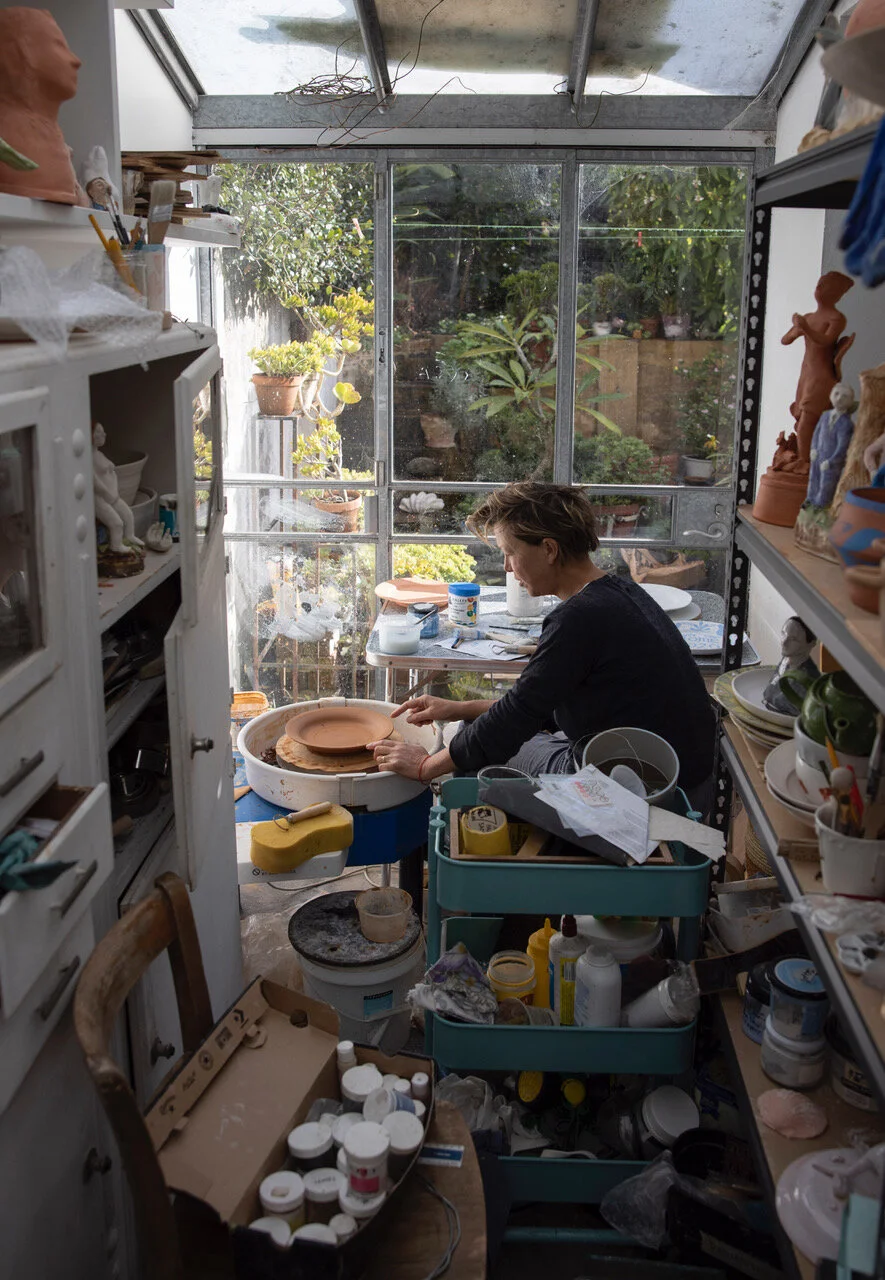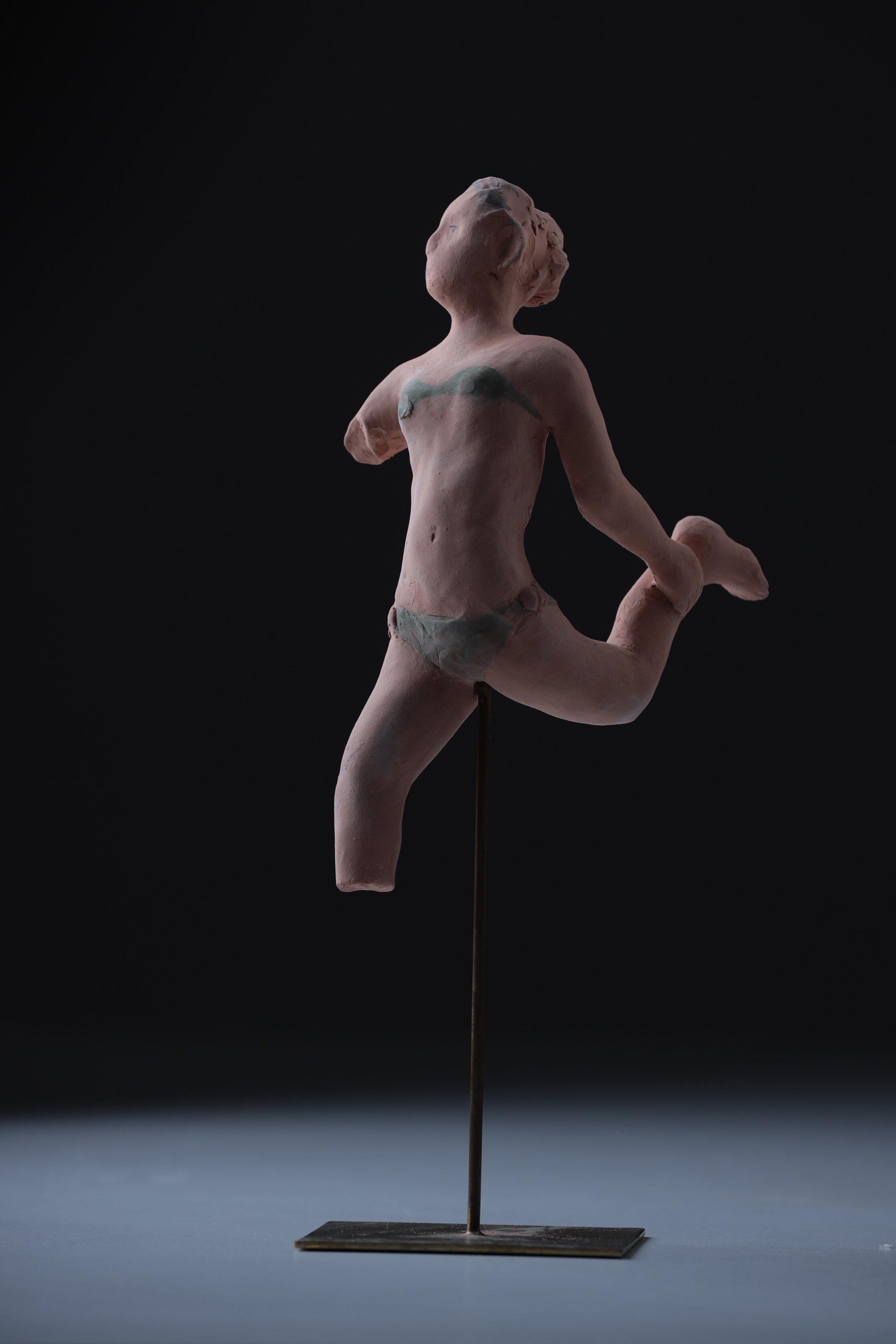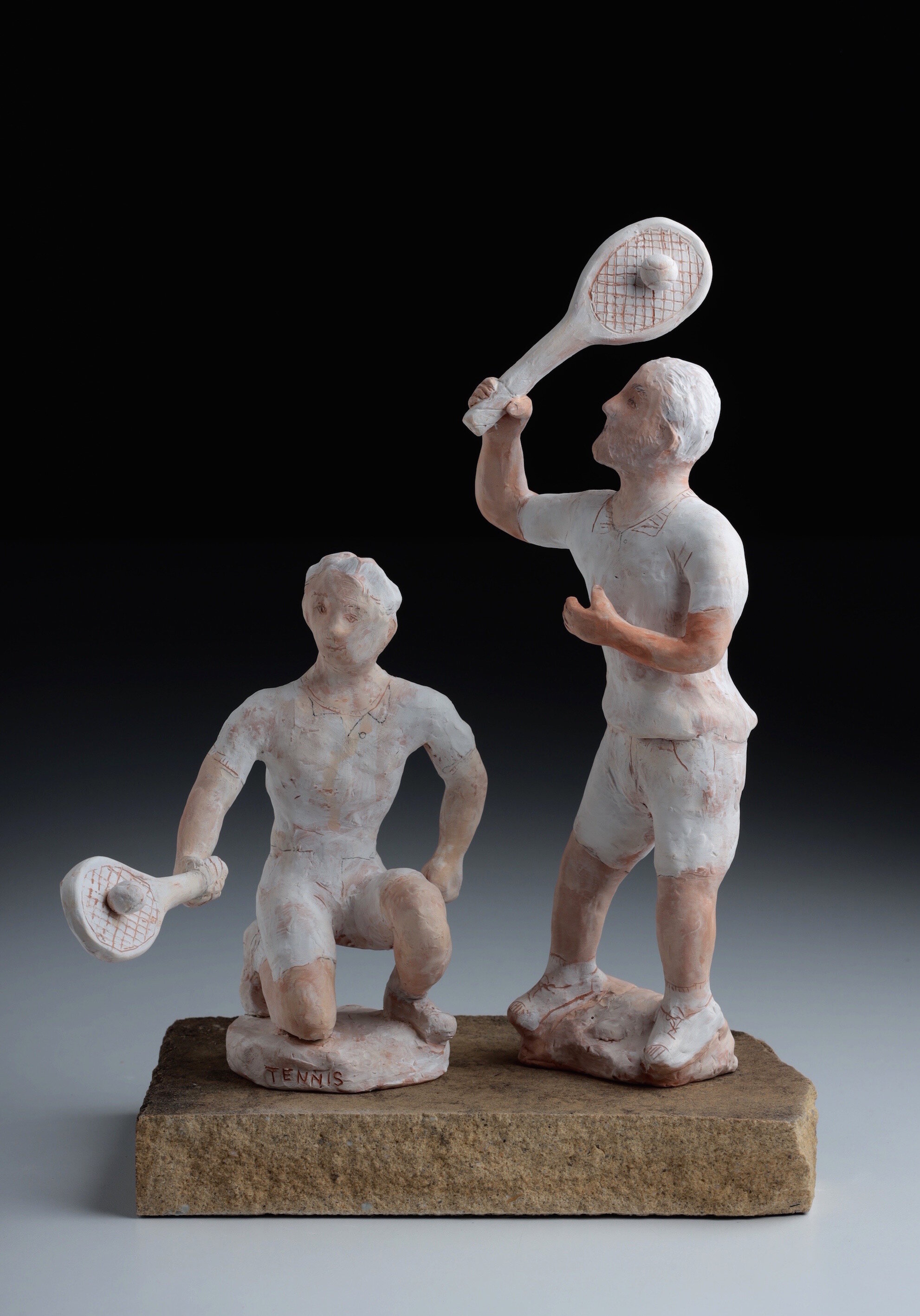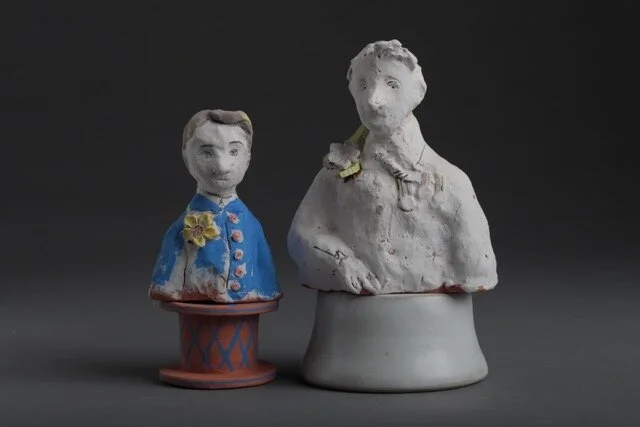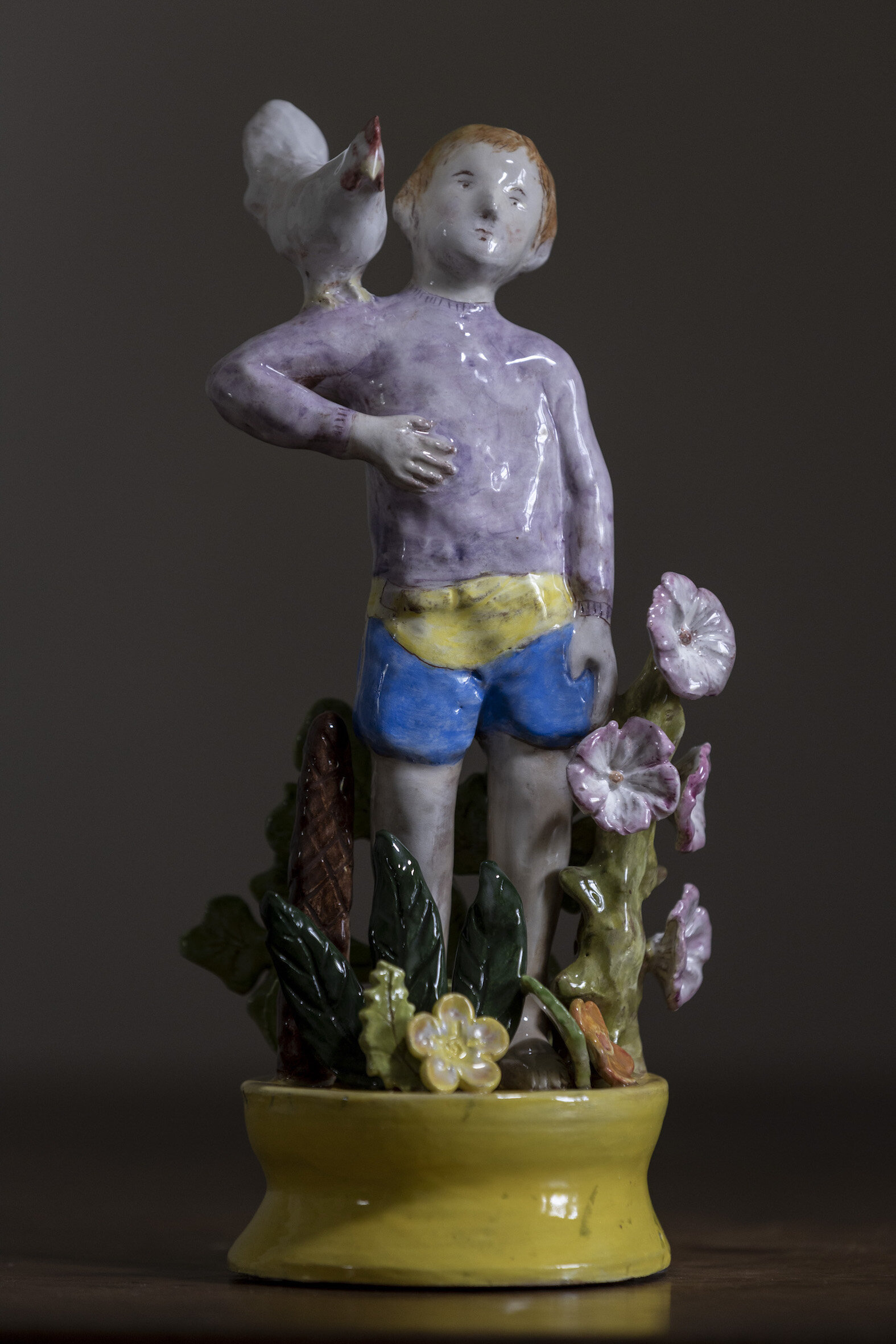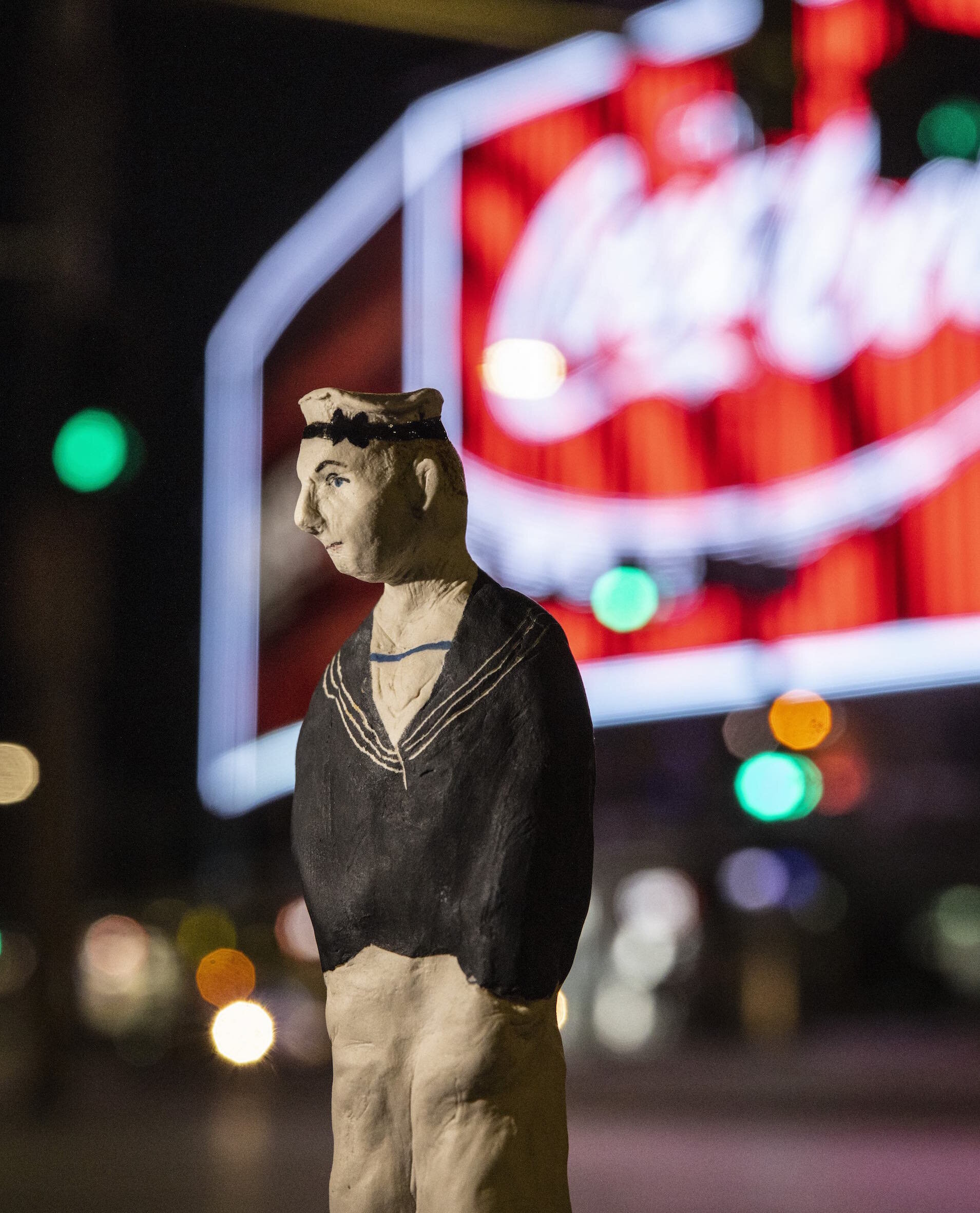Talking Practice: Sassy Park
We chatted with artist Sassy Park (pictured above) about her practice of working in clay, creating both figurative and vessel forms. Have a read!
We’d love to know your background and your journey to becoming an artist:
I work primarily with but not limited to clay. I see clay as a social media with its long history in human culture and its universal familiarity. It provides me with infinite possibilities of form and a surface on which to scratch, write and paint. I've always been interested in the inner life of objects, the history that they tell and their capacity for narrative. One of my earliest memories was being allowed to play with the teacups and figurines from my grandparent's china cabinet. Opening the glass doors established my on-going relationship with cultural objects.
I majored in painting at Sydney College of the Arts in the 1980's after graduating from high school in Rockhampton, Queensland. I had already spent time at an art school in London, encouraged by my parents. I never considered myself as a sculptor, even though now when I look back, this is where I had early successes, having had a clay figurine shown in my primary school's display cabinet and winning a student prize with a wooden marionette puppet. I was re-introduced to clay by my own children when they attended ceramic classes at Waverley Woollahra Art School.
When I first started working with clay, I made jewellery which I could produce in the limited time between raising children and working. I joined several local ceramic studios where I picked up basic techniques and information. I came to clay initially as a surface I could paint. When I started teaching jewellery and object making, it cemented my interest in the idea of three dimensionality. Encouraged by family and friends, I applied to undertake a masters degree at the National Art School, Sydney where I graduated in 2018. One of the main reasons for choosing the National Art School to continue my art practice was the strength of the ceramics department, with Lynda Draper as the head, and a great staff including Stephen Bird who became my supervisor.
Tell us about your practice:
My practice includes both figurative and vessel forms. I usually hand-model each figure as an individual piece although they often come together as a group where they relate to each other. The gestural quality of clay is something I seek to maintain in the finished works. Sculpture has historically been seen as large scale, ego-driven and masculine, especially in terms of late twentieth century Modernism but I prefer the small scale where the intimacy and detail can draw us in to look more closely. I like the idea that there is an internal dialogue that arises between the sculpture and viewer or subject and object.
Ceramic objects have often been used to carry ideas of the souvenir. Observations of the everyday and things that affect me find their way into my work and become markers of time. Clay with its embedded ideas of fragility and transformation lets me explore ideas of intimacy and vulnerability. Figurative sculptures themselves exert an uncanny life of their own. We reflect our own experiences through them. Through this initial recognition I also want to challenge perceptions and ideas of stereotype.
I work with different clays from earthenware to porcelain depending on the surface I want to achieve but increasingly I am drawn to the humble character of terracotta. I often use mixed media in the presentation of my final work, using plinths of stone, or objects like upturned cups or wooden trays. I am not caught in the materiality of clay but think of it as a material that can be mixed with other media. Drawing is integral to all my work. I find even a minimal sketch can allow me to picture the end result that I strive for. In fact it is better not to work to a highly finished idea as the work evolves through the making process.
Since the pandemic I have ended up with two studios, one at home where I can paint and glaze and one at Kil.n.it in Glebe. When making figures I use modelling or coil building techniques. Currently I am working on a number of projects including Sailor Pete part of Ceramix, at the Manly Art Gallery. The exhibition pairs ceramic artists with non ceramic artists an idea developed by the Australian Ceramics Association, and curated by Sophia Cai. Mara Schwerdtfeger, a musician and composer, has collaborated with me to make a sound and film installation about a ceramic figurine, Sailor Pete, who yearns to be elsewhere but instead wanders the streets of Kings Cross looking for beauty. I have been making a 'souvenir' crew of sailors using the mould technique which is a new technique for me and comes about through my interest in ancient Greek Tanagra figurines. I am also working towards a solo exhibition to be held in Melbourne at Mars Gallery in November. This show will consist of a series of figures, busts and heads as a way of exploring gender and archetype using the starting point of Jean-Luc Goddard's 1966 film, Masculin Féminin.
Do you have any favourite artists?
I admire artists who are playful, poetic and profound. Hylton Nel is one of my favourites. Based in South Africa, he calls himself a potter artist and creates plates, vases and sculptures inspired by Staffordshire pottery and other distillations of historical ceramic forms. His concerns are those of his immediate world. I am also interested in outsider artists, like Lisa Reid and Alan Constable who work at Arts Project Australia, for the direct way they handle materials and the honesty of their concepts.
Anything else you’d like to share?
Although I am still deeply drawn to working with clay, I would also like to extend into other processes like bronze casting. Having the opportunity of exhibiting twice in the Tom Bass Prize has opened the possibility of my work expanding into a wider field of sculpture.
Thank you Sassy for taking the time to share your practice with us. If you would like to see more of Sassy’s work, you can visit Sassy’s website or follow her on Instagram.
Image captions: from very top: Sassy Park at work in her Darlinghurst studio, 2020. Next two images: left: Bikini Girl of the Ancient World 2020, terracotta with brass stand, 34 x 10 x 15 cm. Right: Men’s Doubles (Tennis) 2020, ceramic, cement. 37 x 31 x 16 cm. Next single image: Father and Son 2018, terracotta, stoneware, slip and underglaze. Next two images: left: Laurie takes Lucky, the school chicken home 2020, ceramic, 29 x 15 x 10. Right: Sailor Pete in Kings Cross 2021, film still. Bottom image: Garden Play Set 2020, ceramic, wood (found object), 26 x 34.5 x 34.5 cm.
All photographs by Karl Schwerdtfeger.
